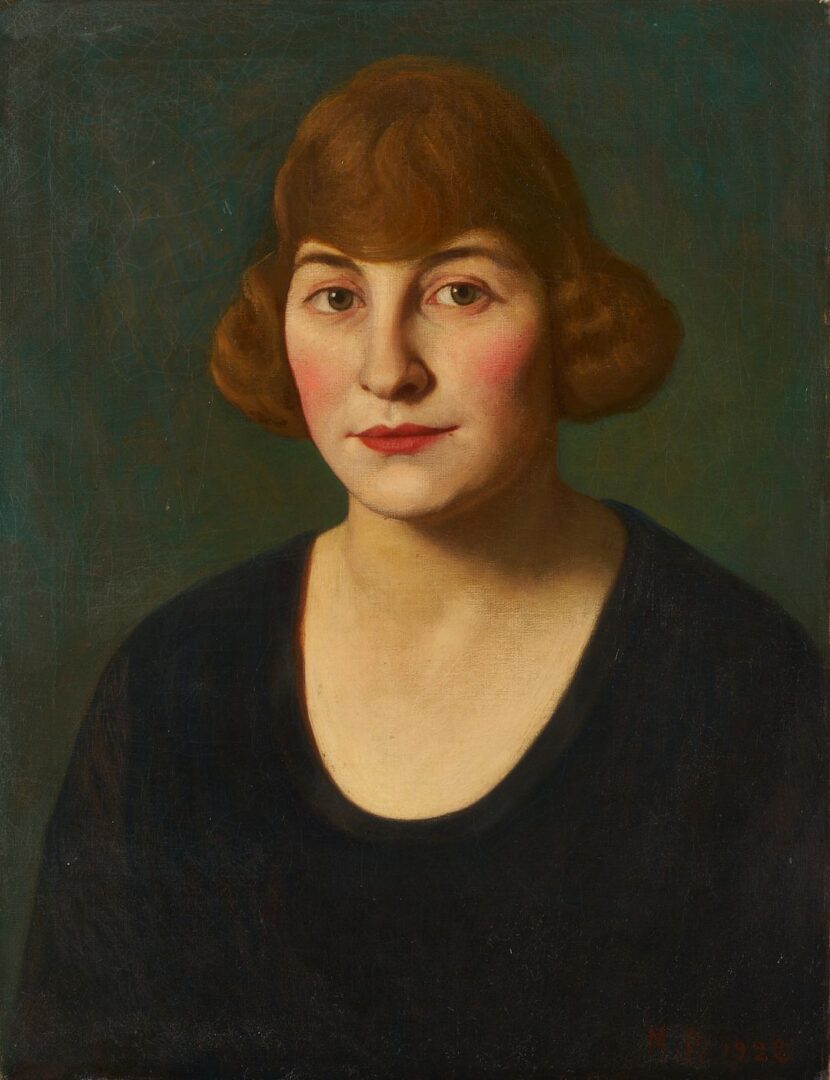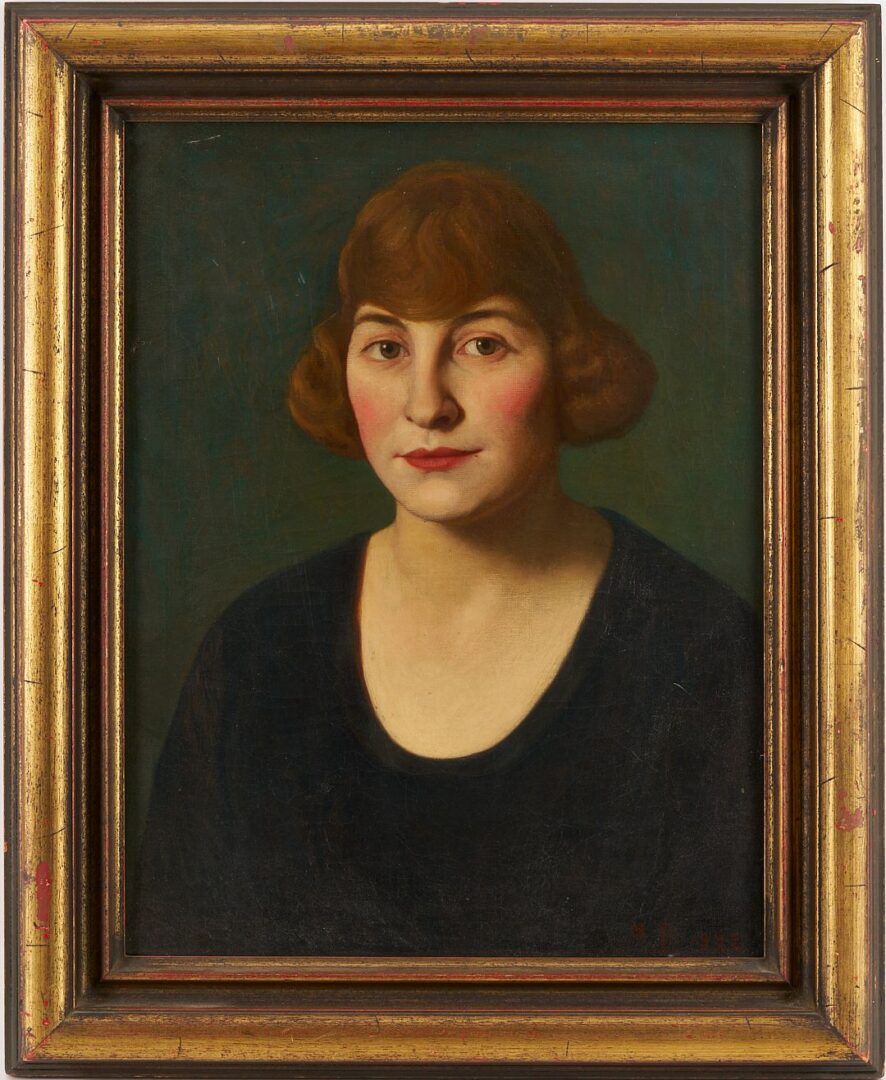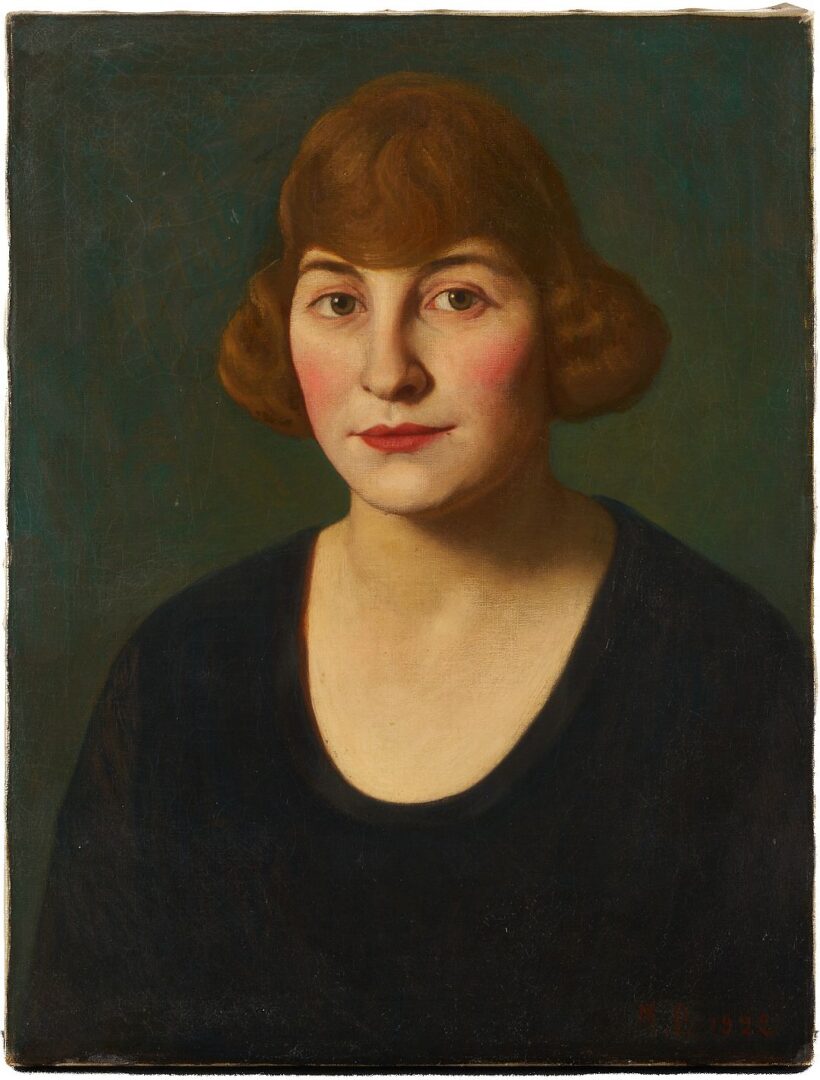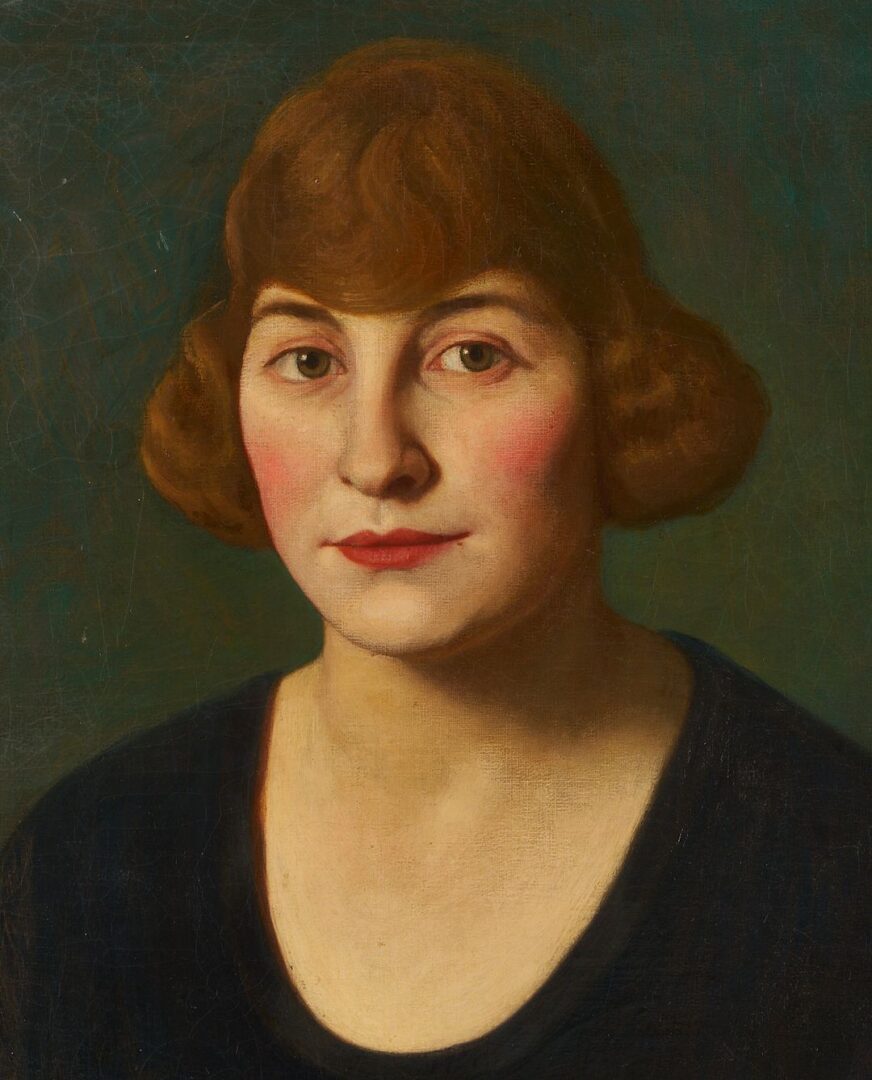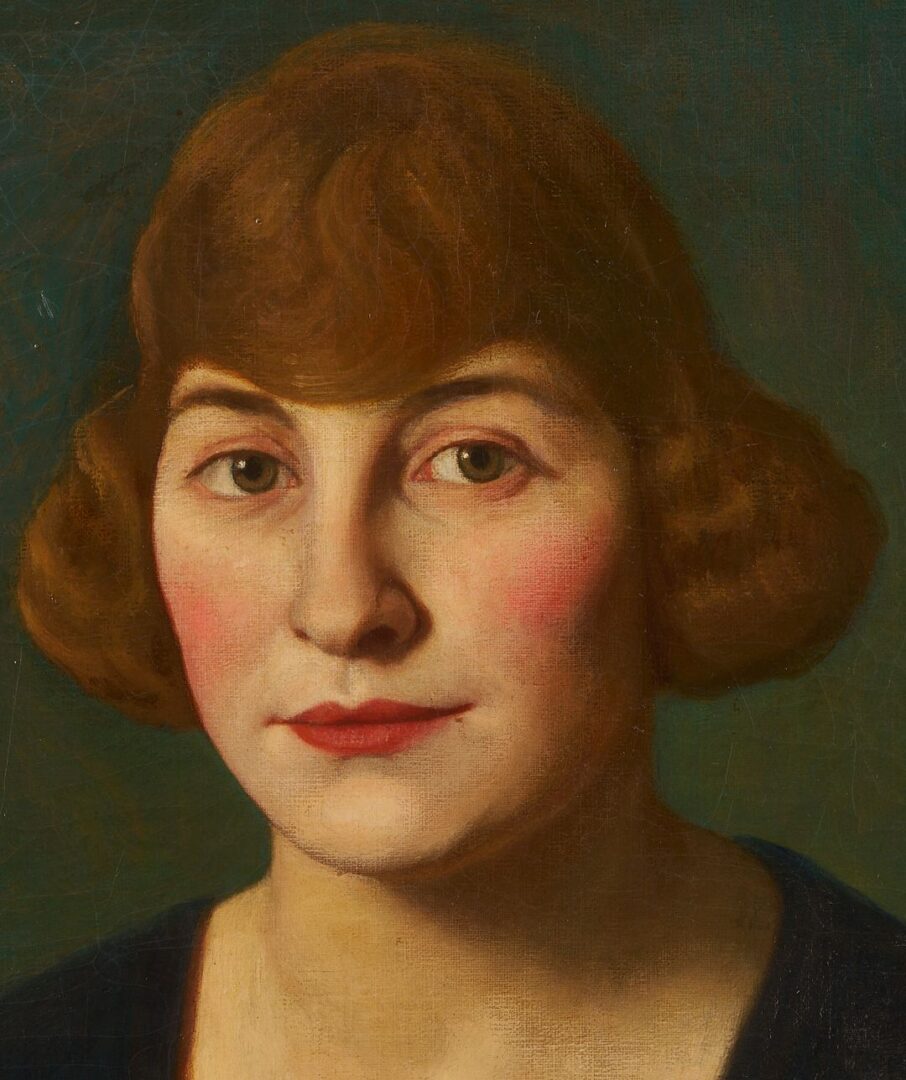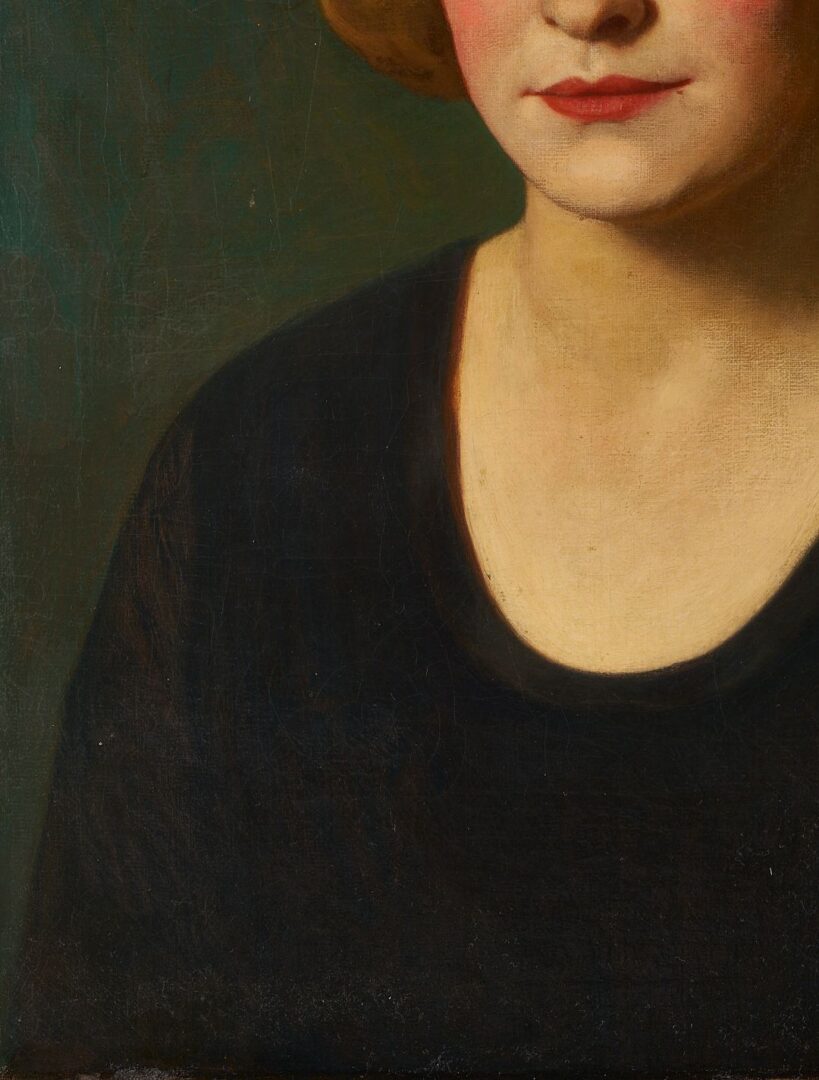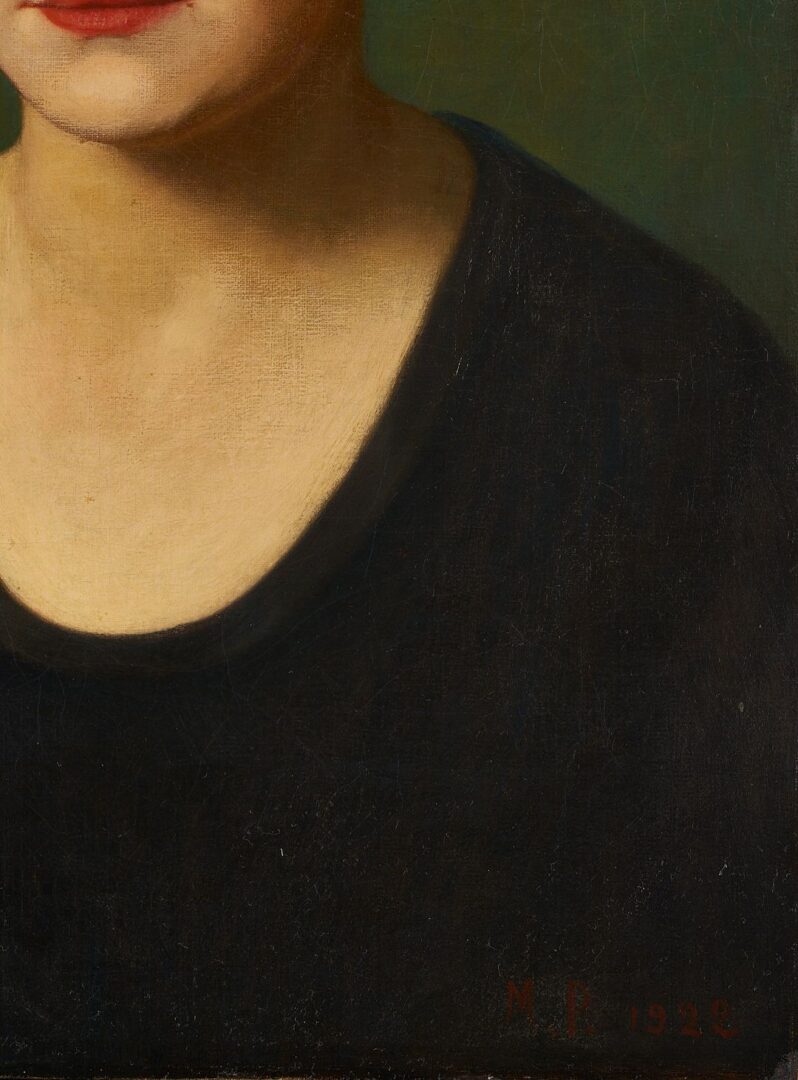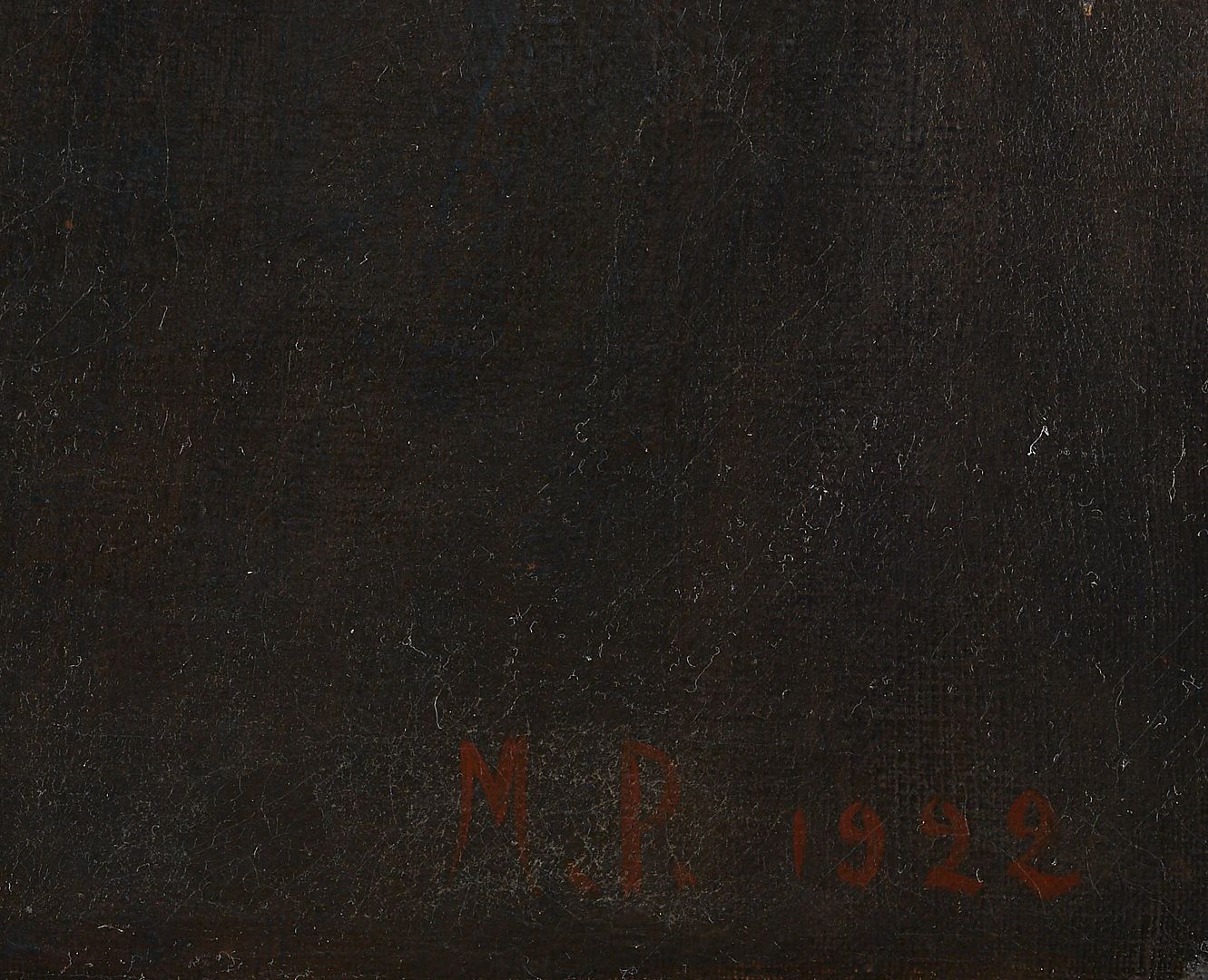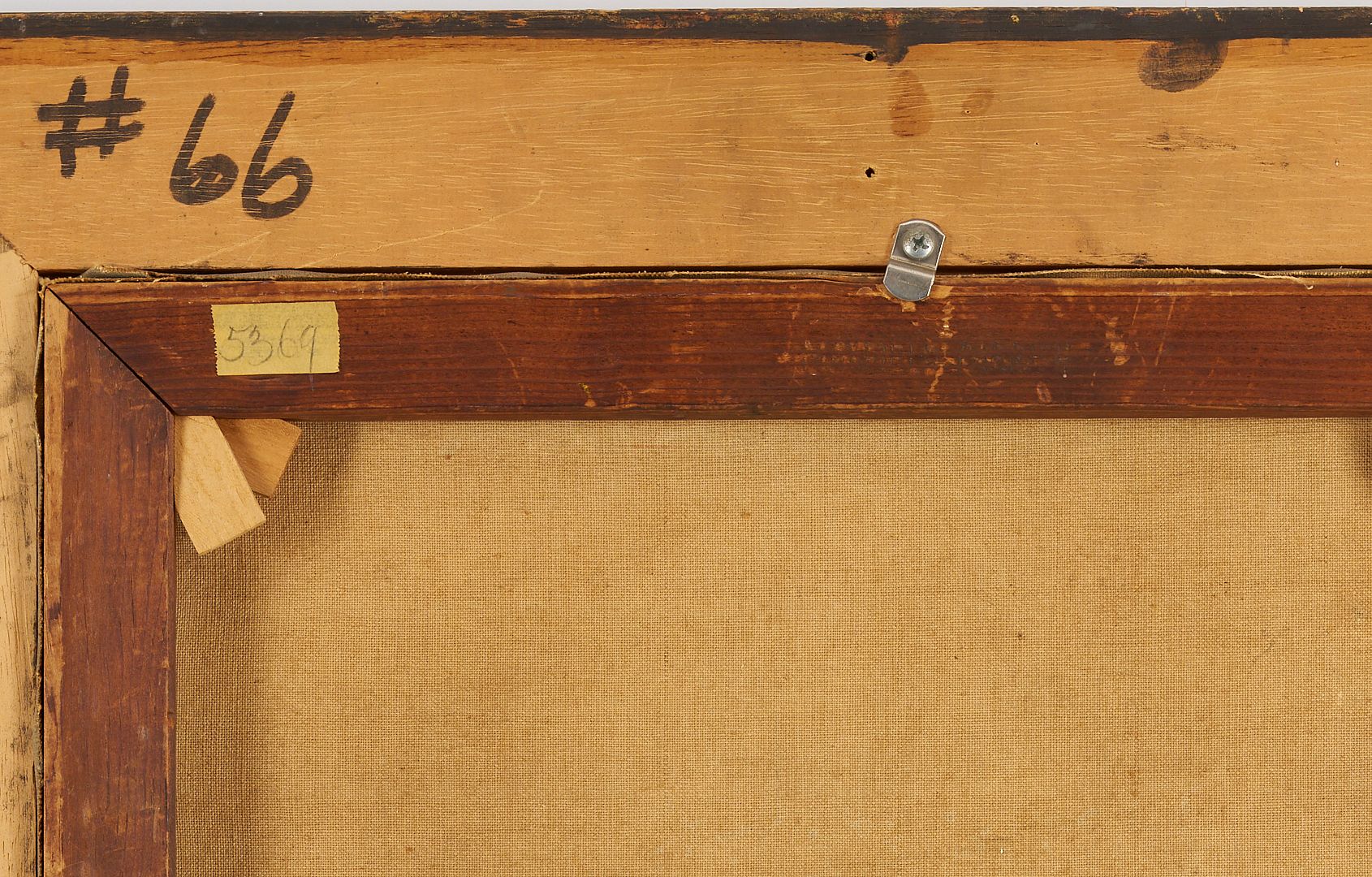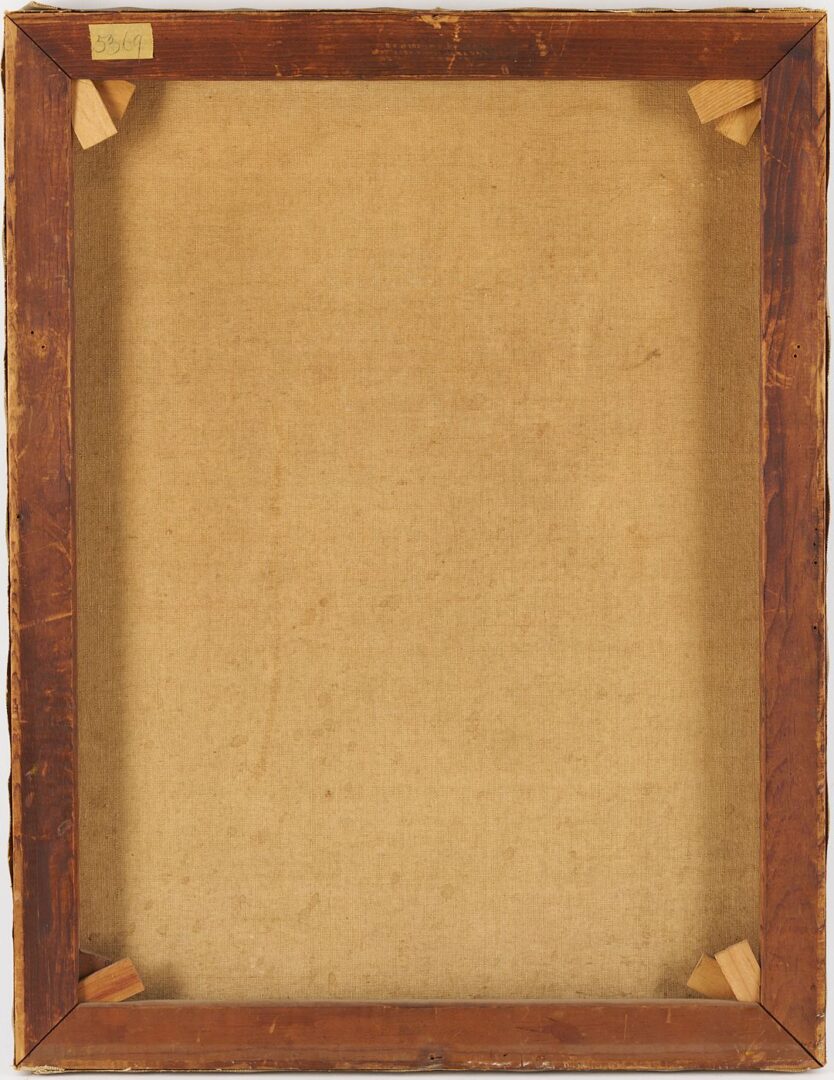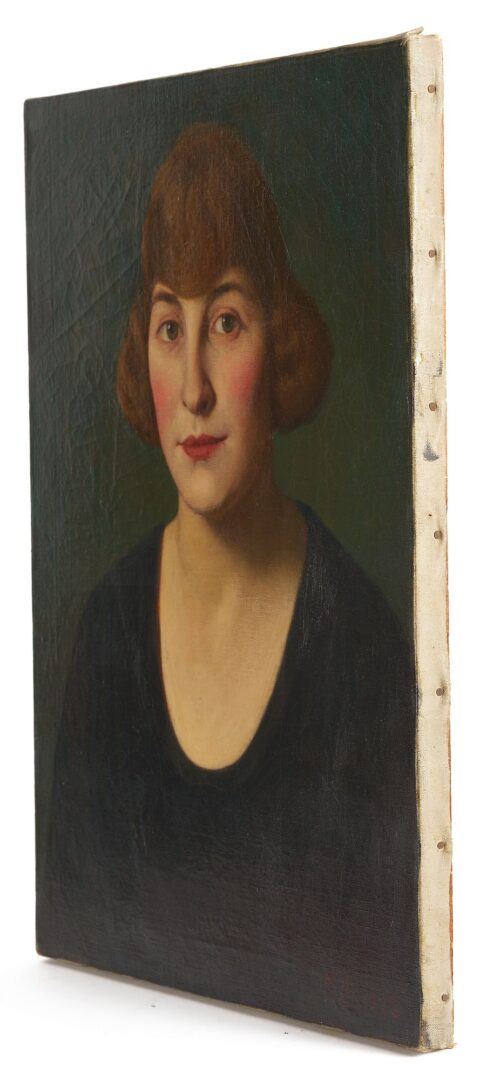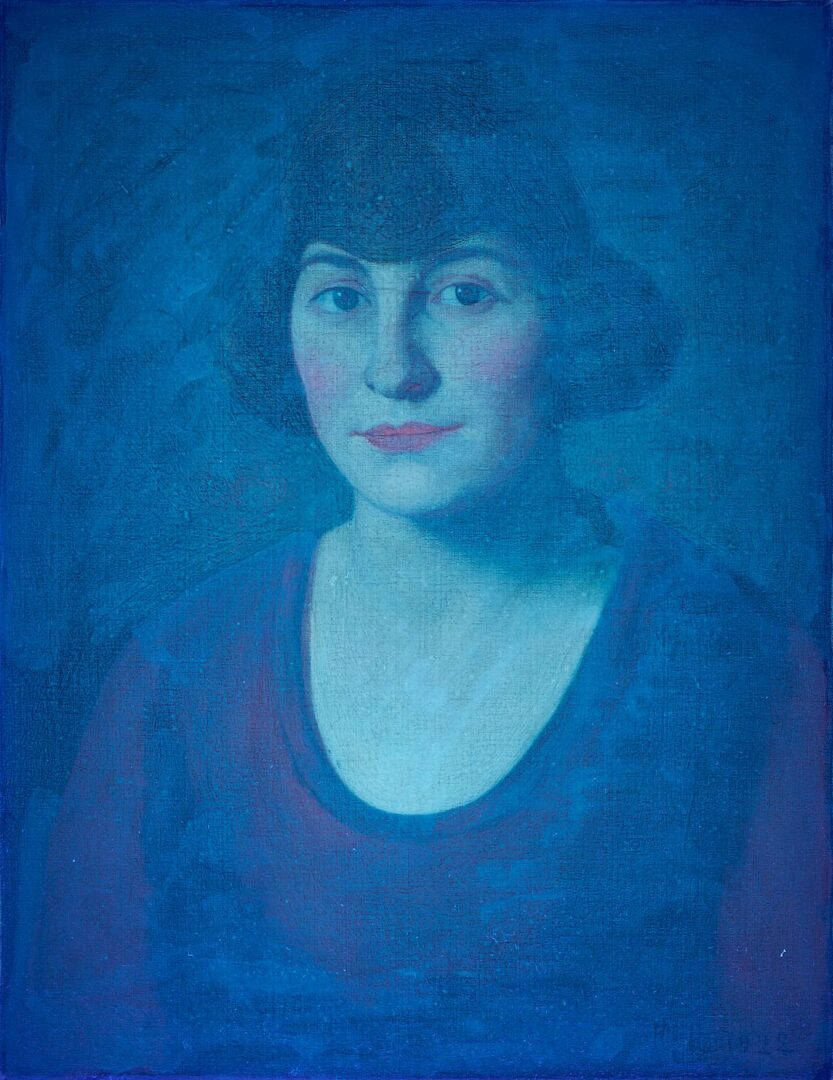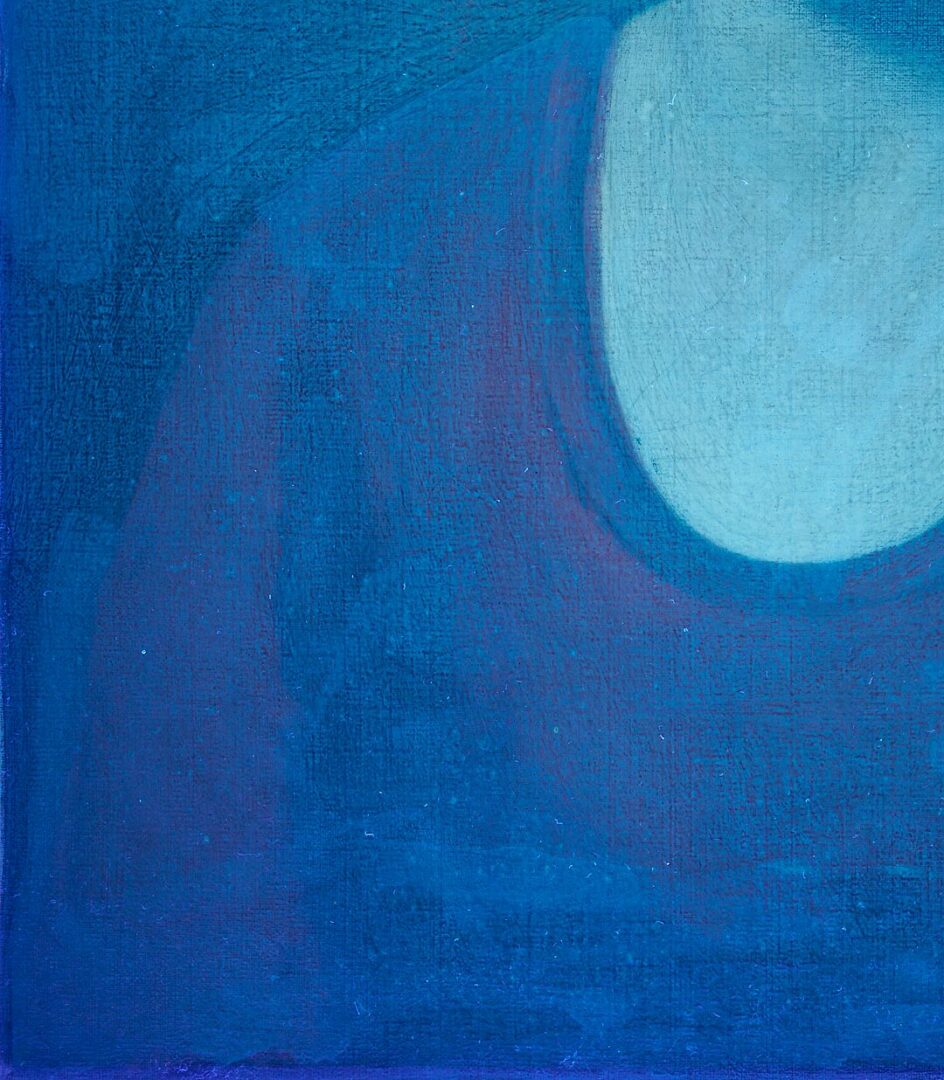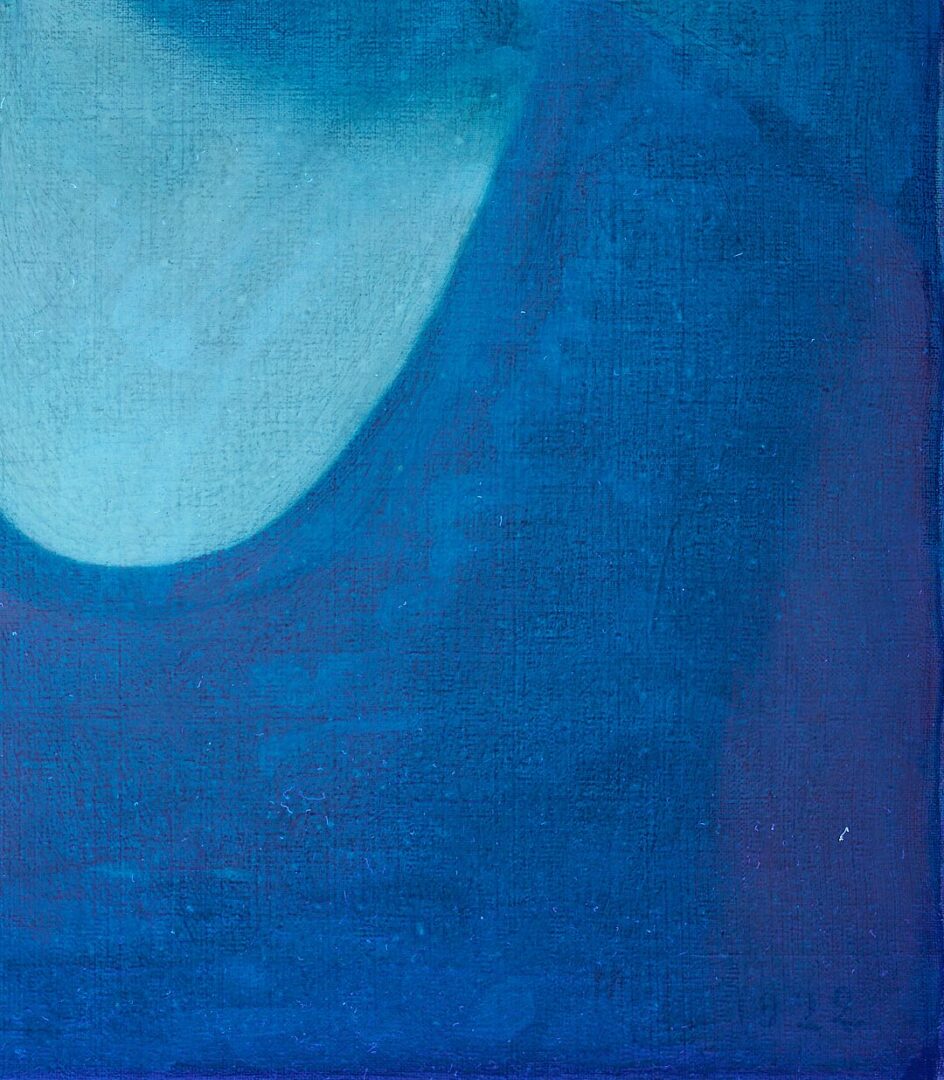SOLD! for $15,240.00.
(Note: Prices realized include a buyer's premium.)
If you have items like this you wish to consign, click here for more information:
Selling with Case- Low Estimate: $8,000.00
- High Estimate: $10,000.00
- Hammer Price: $12,000.00
- Share this:
Maxfield Parrish (American, 1870-1966) oil on canvas portrait of a woman, initialed and dated “MP 1922” lower right, also signed with impressed block letters on top stretcher verso: “MAXFIELD PARRISH”. Sight 16 in. x 21 in., Canvas 17 in. x 22 in., Framed 22 1/2 in. x 27 1/2 in. Description and Essay (courtesy Jane C.H. Jacob, ASA, art historian): “The vertically oriented oil on linen painting by Maxfield Parrish depicts the bust portrait of the female sitter with an auburn-colored bobbed haircut looking directly at the viewer. The portrait incorporates the influences of Parrish’s proficiency in saturated color with extraordinary facial detail and academic perfection with his fully developed technique of using pure pigment and layers of varnish. The painting demonstrates how the artist’s vision distinguishes his work from that of his contemporaries, depicting features often described as “too realistic not to be believed.” The result of the portrait is a mesmerizing effect achieved through minimalist design; her face is highlighted against her auburn hair and green background and set off by her deep-cut black frock. The viewer is drawn into the subject’s eyes, slight smile, and beckoning expression.
Background: By the 1920s, the work of painter, illustrator and muralist Maxfield Parrish was publicly celebrated and esteemed. In 1922, George Eastman of the Eastman Kodak Company commissioned Parrish to create a painting to hang in the new Eastman Theater he was constructing in Rochester, NY. Entitled “Interlude,” sometimes referred to as “The Lute Players,” the painting depicts beautiful women in classical clothes lounging in paradise. The same year, the art publishing firm House of Art commissioned Parrish to paint his iconic painting, Daybreak. After finishing the picture in 1922, he agreed with the firm to manufacture and distribute his artwork. The agreement allowed him to secure the income needed to step away from commercial art and focus on his true passion of nature. The popularity of Daybreak led to an exhibition featuring over fifty of his paintings at a New York Gallery, which was highly profitable for Parrish. It was during this time that Maxfield Parrish completed this untitled portrait. It is a celebrated instance of an exceptionally scarce portrait painting by the artist. The sitter, although formally unidentified, establishes the remarkable evidence of Parrish’s artistic and commercial success and offers a stunning portrayal of female beauty, characterized by deep expression and allure. It was likely commissioned and completed for a significant relationship. This portrait has been in the same family for approximately 75-100 years, making it the missing piece of the puzzle needed to thoroughly understand the breadth of Maxfield Parrish – a national icon in America’s cultural experience.”
This portrait’s first identified owners were Walter and Helen Case King, whose bespoke hat boutique, The Lyzon Hat Shop in Hampton Bays, New York, was a magnet for upscale customers from New York City and high society enclaves like Southhampton, Westhampton, and East Hampton. For her wedding in 1956 to Prince Rainier III of Monaco, Academy Award-winning actress and style icon Grace Kelly commissioned the Kings to design hats for her bridal party. Princess Grace purchased many hats from the Kings over the years, and First Lady Jackie Kennedy was also a customer. By the 1960s, Walter’s health was failing and in 1968, he died at the couple’s home in Chattanooga, TN, bringing an end to Lyzon Hats. The building remained in the family and was operated as an art gallery by Hewitt “Hooty” King. When Hewitt died in 1995, the factory portion of the Lyzon Hat Shop fell into disrepair. It was demolished by Southampton Town in 2005. The hat shop itself was then donated to the Hampton Bays Historical and Preservation Society in 2006. The Historical Society then donated the shop to Southampton Town, and restoration began in 2016. On June 23, 2018, the Lyzon Hat Shop was dedicated and opened to the public under the auspices of the Hampton Bays Historic and Preservation Society.
This painting, meanwhile, descended to Walter and Helen’s son with the oral tradition that the sitter was “Mrs. Parrish.” (However, the still-unidentified sitter in this portrait does not resemble Maxfield Parrish’s wife Lydia, and the two were having marital difficulties in 1922 due to Maxfield’s deepening relationship with his model, Sue Lewin).
Maxfield Parrish was connected to Southampton. Parrish lived in New York in 1918-1919 and maintained a studio in East Hampton, Long Island, near Hampton Bays for a period. He also had a connection through his cousins, James Cresson Parrish Sr. (1840-1926) and Samuel Parrish (1849-1932), founder of the Parrish Art Museum, both of whom had estates in Southampton. After moving his successful law practice from Philadelphia to New York in the early 1880s, Samuel Parrish began collecting art seriously and in 1896, he began his endeavor to build an art museum in Southampton that could store his prized collection of Italian Renaissance art. Samuel Parrish was fond of his cousin’s artwork and commissioned Maxfield Parrish to create for his home, Rogers Mansion, a smaller version of Maxfield’s famous 1909 mural, “King Cole” (commissioned by John Jacob Astor IV for a New York City hotel). The Rogers Mansion is now part of the Southampton Historical Museum. The Parrish Art Museum would grow into one of the best art museums in the area today thanks to Samuel Parrish’s commitment to the preservation and celebration of art.
In July, 1922, the year this work was painted, James Cresson Parrish, Jr. (1884-1960), married his second wife, 34-year-old “Willie” Burton Oliver Elkins (1888-1930). In announcing the nuptials, the New York Times noted, “The bride is prominent in society in California and in France, where she organized a hospital for children during the war” and mentioned that Samuel Parrish attended the wedding (The New York Times, July 13, 1922). The marriage ended in 1930 with Mrs. Parrish’s death at age 42 “after an operation” (KC Times, Mar. 5, 1932). Parrish himself died in Southampton in 1960. The couple left no children.
PROVENANCE: By descent from Walter H. and Helen (Case) King, founders of The Lyzon Hat Shop, Hampton Bays, New York, to their son Myron King, founder of Lyzon Frames & Fine Art, Nashville, TN; through bequest to his son, the current owner, Ron King, Nashville, TN (2011).
CONDITION: Overall craquelure, including impact crackle upper left background. A UV light inspection suggests no previous repair or retouch.
